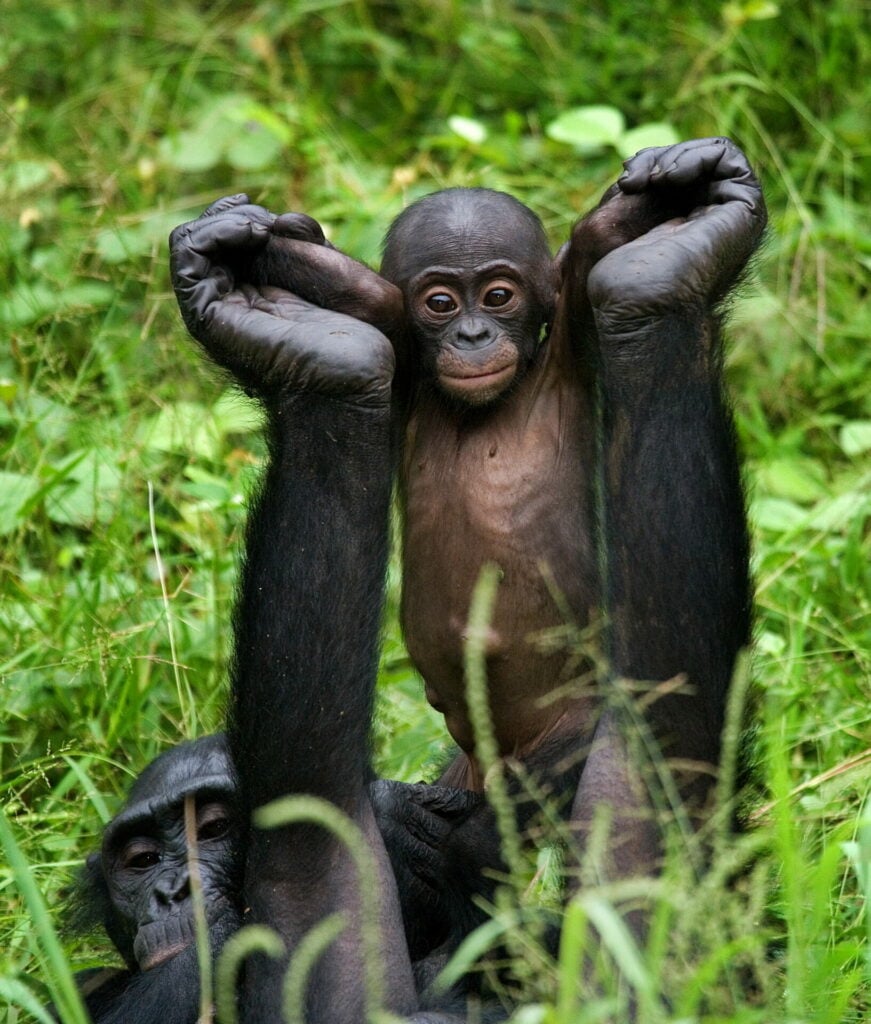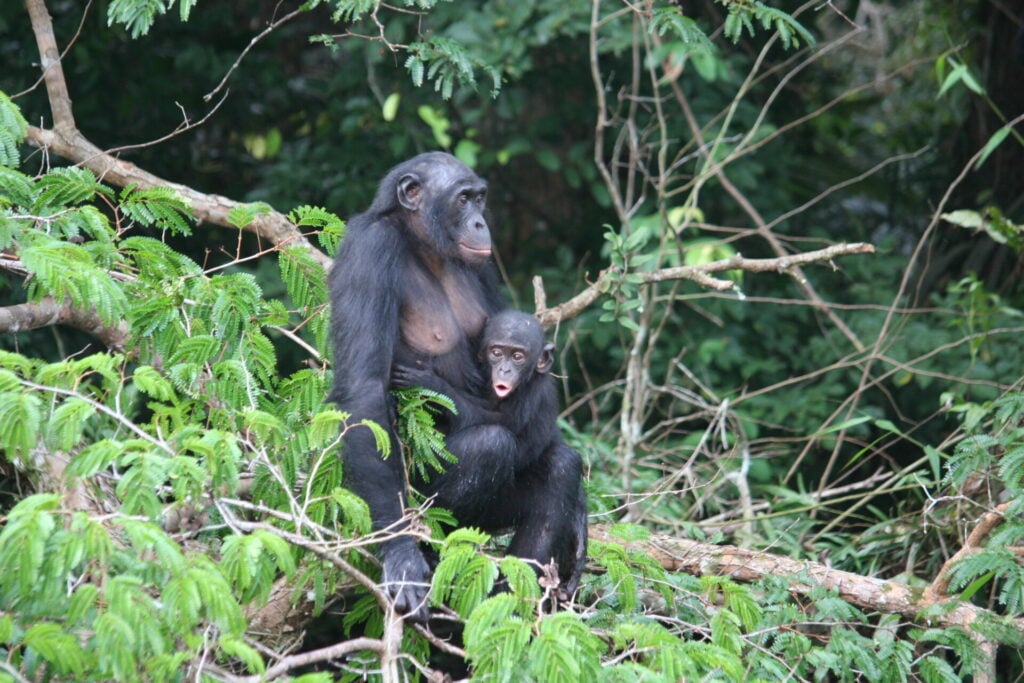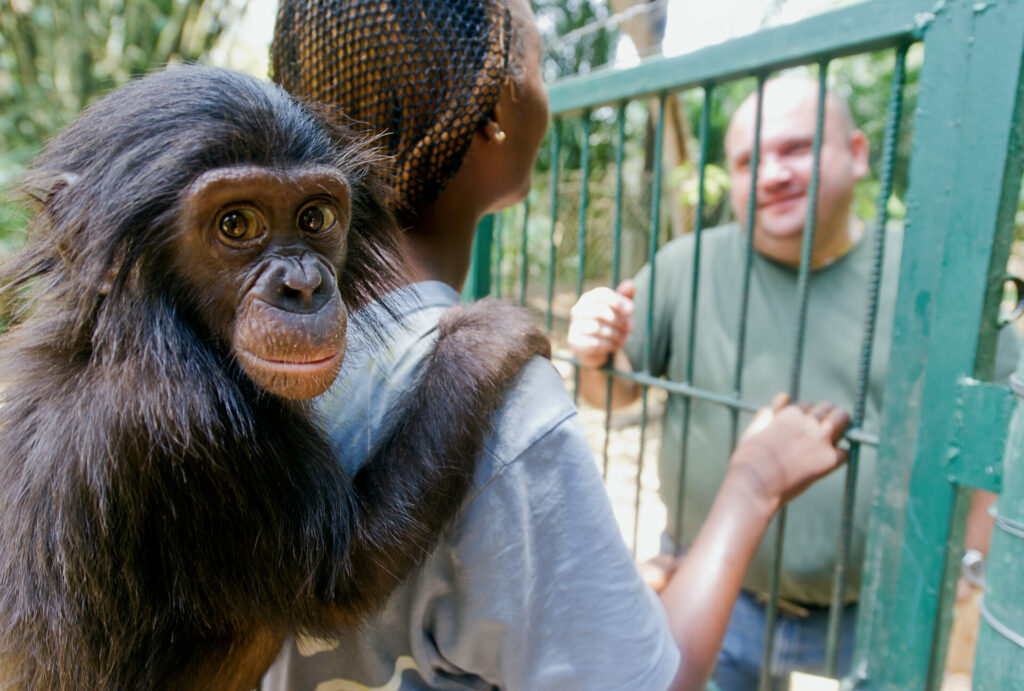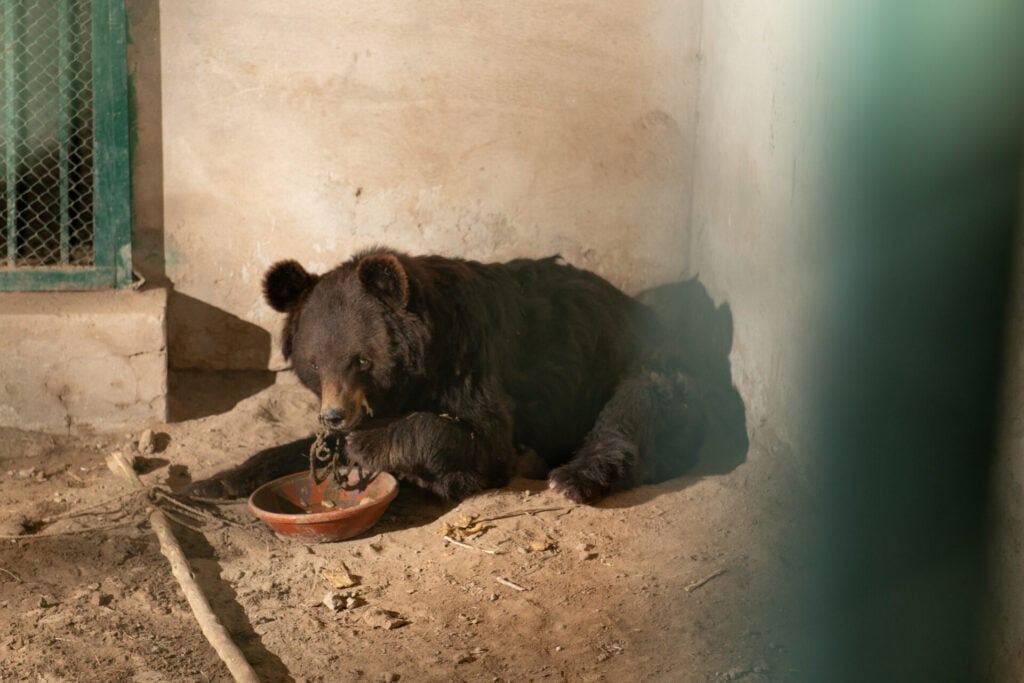Back in June, the largest ever single study of primate DNA was published, providing not only more clues to the evolution of our ancestors, but helping us better understand what makes us, well, human.
With any luck, it will shed even more light on unsung, understudied, but far from unremarkable, bonobos. Despite being the most genetically related to us, these empathetic and intelligent animals are the least understood great ape in Africa.
Long mistaken for their chimpanzee brothers and sisters, smaller, leaner and darker bonobos weren’t actually recognised as a distinct species until 1929.

Classified as endangered on the International Union for the Conservation of Nature’s (IUCN) Red List, there’s thought to be fewer than 30,000 bonobos left in the wild, compared to 50,000 orangutans and 150,000 common chimpanzees.But bonobos’ actual numbers could be even lower, with efforts to survey these ‘forgotten apes’ impeded by the remote and rugged terrain in which they live.
A Broken Home
That resource-rich terrain is terrifically biodiverse, but troubled. Endemic to the Democratic Republic of Congo (DRC)’s Congo Basin, wild bonobos’ only home happens to be a long-contested corner of Central Africa blighted by decades of civil unrest. One of the world’s poorest countries, 67 per cent of the country is blanketed by jungle, of which a tenth was lost from 2001 to 2022 according to Global Forest Watch, which is bad news for bonobos.
‘The biggest threat to bonobos undoubtedly is hunting for the bushmeat trade’
They may inhabit the second largest rainforest after the Amazon, but it’s becoming an increasingly fragmented and fragile one. According to a report published by the World Resources Institute in June, over 500,000 hectares of forest was razed in the six country-spanning Congo Basin last year.
Rampant deforestation to make way for slash-and-burn agriculture, mining of coltan – a conflict mineral that winds up in our smartphones – and logging, combined with poaching and corrupt law enforcement, is taking a heavy toll on bonobos. And it’s a plight not helped by these great apes’ painfully slow reproduction, with a female giving birth only every four to five years.

Bonobo Bushmeat Orphans
Those offspring can very quickly become ‘Bushmeat Orphans,’ as president of the Bonobo Conservation Initiative (BCI) Sally Coxe knows only too well. ‘The biggest threat to bonobos is hunting for the bushmeat trade,’ BCI’s founder tells The Ethicalist.
Despite the hunting and trading of great apes being illegal in the DRC, not to mention taboo in certain ethnic groups owing to how humanlike they are, slaughtering adult bonobos for their meat remains rife in the Congo Basin.
‘[The bushmeat trade] is driven largely by the lack of infrastructure to get other goods to market (smoked meat, for example, is one of the only commodities that can survive long treks to marketplaces) and lack of other employment opportunities for the local people, along with cultural traditions that favour wild meat,’ Coxe explains.
Not just collateral damage, orphaned infants are sold into the billion-dollar exotic pet trade and faraway zoos. The capital of Kinshasa is DRC’s hub for smuggling live apes out of the country either by air or on water via river boats.
A kidnapped baby or juvenile bonobo will witness the murder of as many as ten family members during its capture at the hands of hunters
Published by the Global Initiative Against Transnational Organized Crime (GI-TOC) in April, illegal wildlife trade investigator Daniel Stiles’ report lay bare a grim truth: that live bonobos command four times what they were valued 10 years ago.
According to the Bushmeat Crisis Task Force (BCTF), a kidnapped baby or juvenile bonobo will witness the murder of as many as ten family members during its capture at the hands of hunters. It’s deeply ironic that these peace-loving primates are known for their altruism. Far less aggressive than their chimpanzee cousins, bonobos have evolved a sophisticated social structure which is virtually violence-free.
‘When they meet other groups of bonobos, they tend to share food as well as love and affection,’ Coxe explains, ‘while chimps have a male dominated, patriarchal society, bonobo society is matriarchal and the females rule the roost.’
Reserves of Hope
Nicknamed ‘Mama Bonobo,’ Coxe has been a catalyst for change ever since she stepped foot in the humid Congolese jungle in 1994, co-founding BCI just four years later. Working at a grassroots level with locals, the non-profit organisation has helped reforest degraded areas, train 15 bonobo monitoring teams, launched a bonobo rescue programme that’s rehabilitated twenty orphaned bonobos, and established protected areas.
Measuring the size of America’s Massachusetts and Rhode Island combined, bonobos in indigenous-managed Kokolopori and Sankuru Nature Reserves (located in DRC’s Tshuapa and Eastern Kasai provinces respectively) live alongside rare forest elephants and giraffe-like okapi.
Bonobo Paradise

Around 280 miles north, a 117,000-acre swathe of swamp rainforest known as Ekolo ya Bonobo Community Reserve has also become a beacon of hope for bonobos. In 2009, the reserve’s conservationist founder Claudine André made history by successfully rewilding nine captive bonobos that were destined to be another ape trafficking statistic.
But reintroducing a bonobo to its ancestral forest home is no small task. Too emotionally sensitive to survive in zoos, motherless bonobos need round-the-clock affection, which is precisely what they get 500-miles away at the reserve’s 75-acre sister sanctuary on the outskirts of Kinshasa. Known as Lola ya Bonobo (meaning ‘Bonobo Paradise’ in the local language of Lingala), orphaned bonobos come here to be cared for by a surrogate (human) mother who patiently nurses them back to health until they reach five-six years-old.
The next phase is graduation from nursery to enclosure, where they mix with older juveniles and adult bonobos, explains Karen Kemp, who is the Director of Communications for Friends of Bonobos (ABC): the non-profit (also established by André), that manages the sanctuary and reserve.
Six-year-old Esake is their most recent graduate. ‘She was spotted by our field partner strapped to the back of a bicycle on the way to a market in 2019,’ Kemp tells The Ethicalist. ‘Esake was severely malnourished, feverish, and suffering from parasites,’ Kemp continues. ‘We hope one day she will be ready to return to the wild.’
By wild, Kemp means the Ekolo ya Bonobo Community Reserve. Now four times its original size, it’s the world’s only bonobo release site, where 14 more of the peaceful primates were returned last March. All 33 still rely on eco-guards for protection. Here’s hoping that one day, our closest living animal ancestors will no longer need safeguarding from us.













